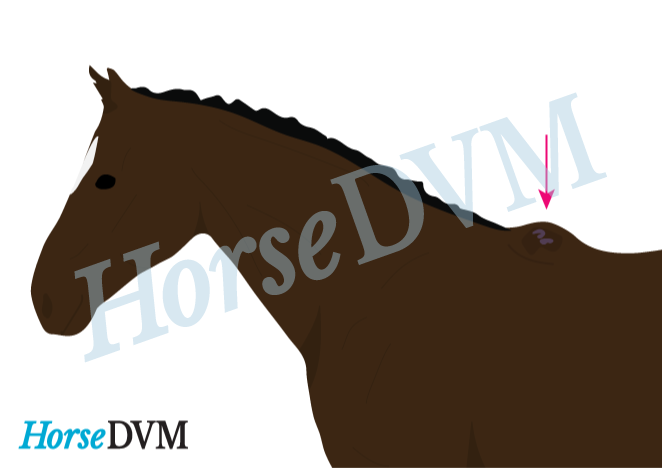Septic supraspinous bursitis, commonly referred to as 'fistulous withers', is characterized by a profuse serofibrinous exudate with varying amounts of skin necrosis at the supraspinous bursa (the region of the horse's withers and associated tissues) that turn into distended fistulous tracts. Fistulous withers is caused by trauma and/or use of poorly-fitting tack.
Clinical signs
Onset of clinical signs is usually abrupt or insidious. Clinical signs that are most often observed during the early stages of fistulous withers is the development of localized pain, heat, and swelling at the location of the withers without obvious external fistulation or exudate. Some horses present concurrently with general stiffness and/or lethargy. Once this bursa ruptures, it releases purulent exudate, draining from the fistula which usually contains multiple bacteria. The most common bacterial organisms isolated from horses with fistulous withers are
Staphylococcus aureus, Streptococcus spp.,
Actinomyces bovis, and
Brucella abortus (the causative agent of
Brucellosis). Brucellosis is a febrile zoonotic disease found in domestic and wild animals worldwide. Cattle, sheep, pigs and goats are the species most commonly infected, and when contracted by horses, is usually associated with the mixed presence of cattle and horses.
 Attention! This is a potentially life-threatening condition for your horse. Time is of the essence, contact your veterinarian immediately.Find a Vet
Attention! This is a potentially life-threatening condition for your horse. Time is of the essence, contact your veterinarian immediately.Find a Vet